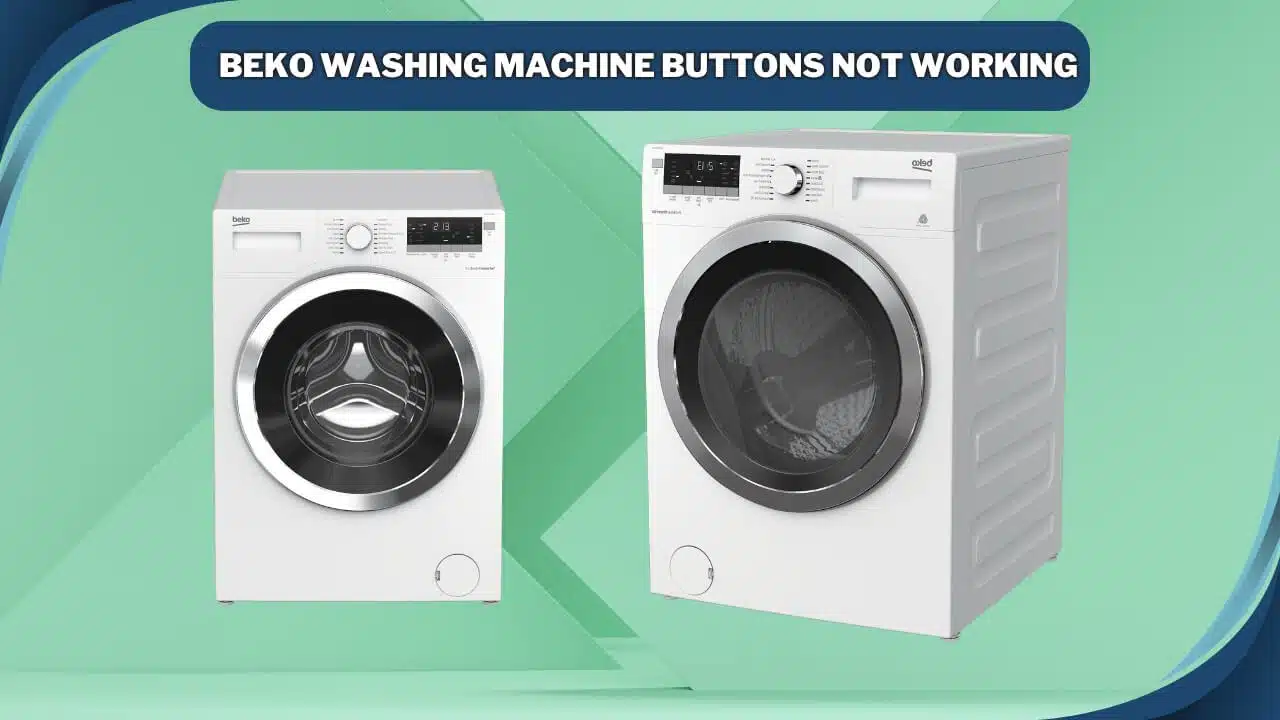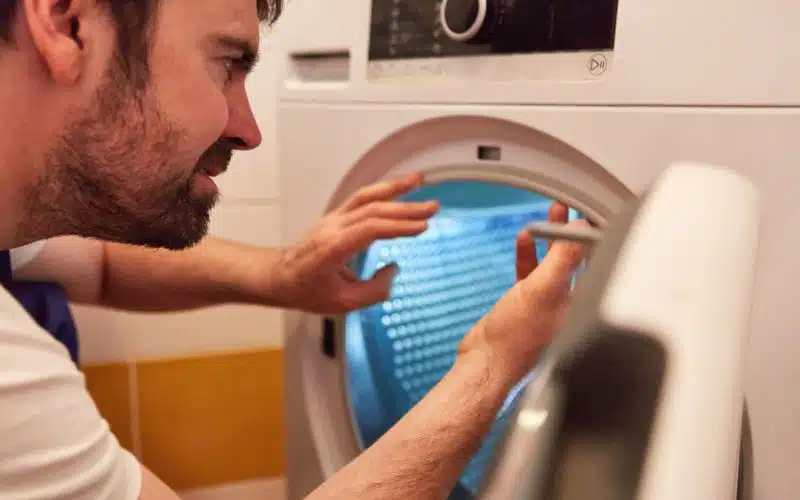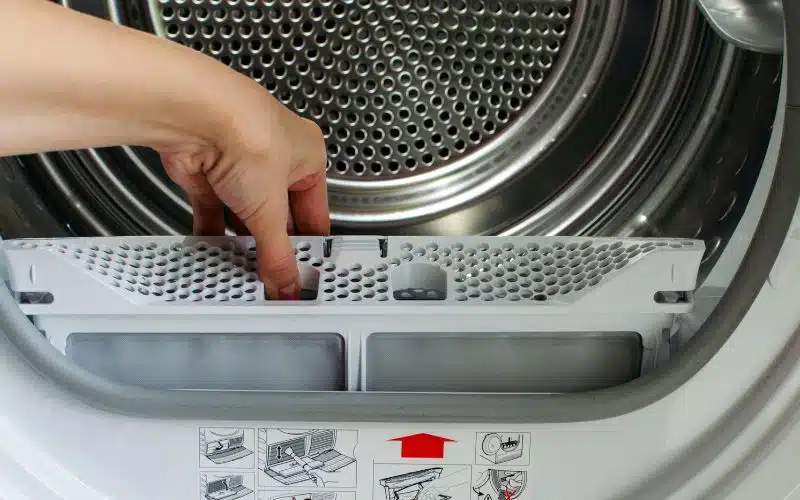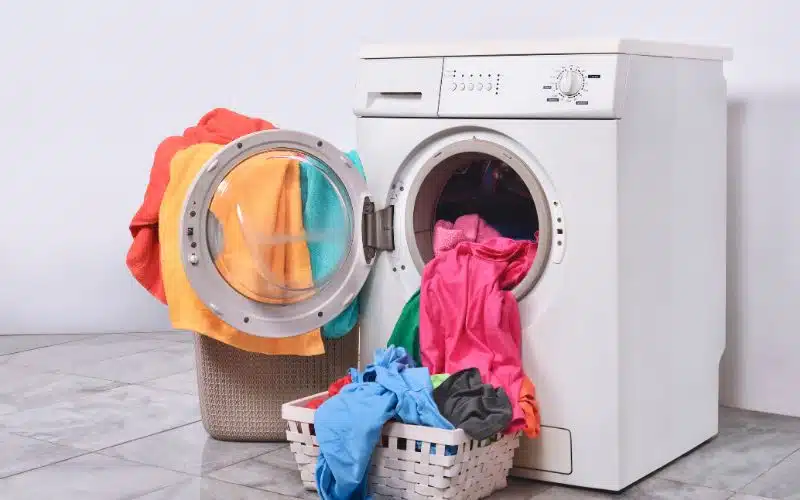Seeing codes displayed on the LCD of your washing machine can be alarming. Most of the codes displayed can be a result of an error.
This can sometimes be frustrating if you don’t know what these codes mean or how to do away with them. The CL code is not an error code but a function that puts your machine in safe mode.
The CL code appears after 30 cycles as a reminder to execute the Clean Washer cycle. In addition, CL is an indicator that the child lock function is activated. At this point, The control panel is disabled, and You cannot change settings while the child lock function is enabled. Therefore, CL is not a washer error code; it is an indicator code.
What Does Code CL Mean On A Maytag Washer?
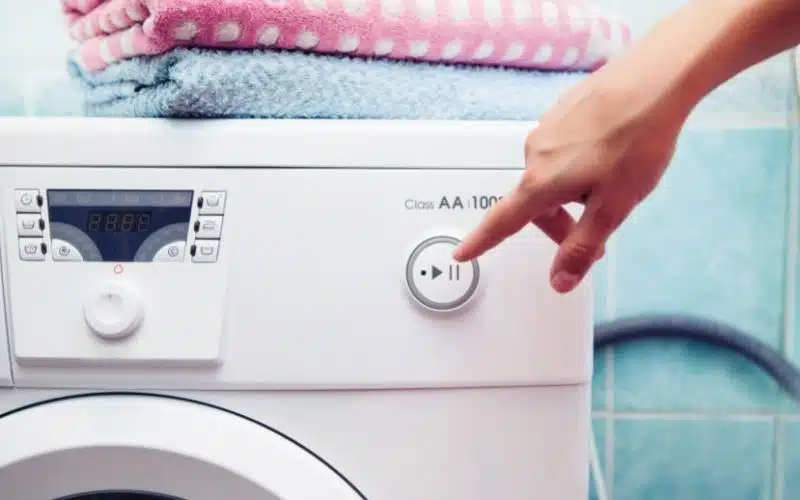
CL means child lock. It is a washer child lock feature; this code informs you that the control lock is activated.
Unlike error codes, this function activates the control lock and stops the door from being open while the washer is running.
You can protect your washing machine from children’s activities by using the Child Lock feature.
This feature allows you to lock the buttons on the washing machine’s control panel so that a child cannot change the wash cycle you’ve selected while playing with it.
The W11156983B number that is provided is not a model number. On front load washers, the model number is located directly inside the door on the face frame after the door has been opened.
Because the Washer is running, the MED6630HW cannot open the door. Instead, press the pause or cancel option two times and the power button once to remove the code.
If the code still appears on the Washer, disconnect power from the Washer for one minute.
If You discovered items During the Clean Washer cycle, Restart the Clean Washer cycle after removing the items from the drum.
There are many other washer error codes on the Maytag washer; below are some of the codes and how to fix them.
#1. SUD or SD
This code indicates there is too much sud in the washing machine. This can happen if you use too much detergent or don’t use high-efficiency detergent.
The additional suds will prevent the Washer from spinning out water. When the words “Sud” or “Sd” appear on the LCD, the Washer extends the rinse time to remove the surplus suds.
The Washer stops turning and adds water for extra rinsing during this period. This wait allows the suds’ bubbles to burst.
Pause and rinsing are required and may be repeated numerous times to remove the suds. So, this could cause your washer’s cycle to take much longer to complete.
You can fix it by unplugging the Washer for 60 seconds and rerunning the wash cycle.
#2. F5 E2
This code indicates The door is not locking properly. In addition, the Maytag washer number F5 suggests that you cannot lock the lid.
It might be that some clothing or other object prevents the cover from locking.
The F5 E2 alert indicates that the Washer cannot engage the lid lock due to an obstruction in the lid lock area.
Therefore, you have to inspect the lid lock area and remove any objects. Also, make sure that there are no clothing items in the way.
Press the stop or cancel option two times and the power button to delete the code to clear the code.
If the error code persists, Turn off the power switch or disconnect the unit for one (1) minute to turn it off.
Reconnect the power to the unit, close and open the door, and restart the process. Keep an eye on the Washer for one minute to confirm the error code does not appear again.
#3. F7 E1
This code indicates a motor speed sensing error and occurs when The motor cannot achieve the correct speed for cycle selection.
This error code means that the engine is having difficulty turning. Make sure the drum isn’t too full. Also, make sure all transit bolts are removed.
You may have overloaded the washer for the cycle you’re running. Take a few things out of the load.
If the code still appears, Unplug and replug the power cord from the wall socket to reset the machine; connect the washer to the power source or plug it in.
Re-select the cycle and press the Start button.
#4. F8 E1 or LO FL
This code indicates the washer is sensing a low flow of water.
If the display shows F8 E1 or LF, the washer is taking too long to load, you may have locked the door, and the control may be inoperative.
The drain hose may kink further into the standpipe than 4.5″ (114 mm). Examine the plumbing for proper drain hose installation. Use a drain hose form and secure it to the drain pipe or tub.
Check for kinks or clogs in the drain hose, and straighten the hose to ensure enough water flow. Remove any obstruction from a utility sink’s drainpipe.
If the code still displays, unplug the washer or turn off the power for one minute.
Connect the washer to the power or plug it in. Then, re-select the cycle and press the Start button.
What Does CL Mean On Maytag Front Load Washer?
On the Maytag front load, CL means control lock; it indicates the child lock feature. This function deactivates the other buttons on the Washer until the door is closed.
The Child-Lock process prevents children from being hurt inadvertently when the washing machine is turned on. This function also safeguards the elderly and the frail.
Below are some additional things to know about child lock
- The child-lock remains active even if the power is turned off and then back on.
- This function protects the product from injury and malfunction caused by improper operations or acts by children, the old, or the frail.
- If the door is opened while the child-lock function is engaged, it will forcibly drain the water to prevent children from drowning.
- When the child lock is activated, water is automatically drained within 30 seconds, even if the power is turned off or the door is opened.
- When the “CL” prompt appears, You cannot turn off the Child-Lock function. However, when the “dE” error appears, the Child-Lock feature can be disabled.
- As soon as the door is opened with the Child Lock function enabled, an alarm will sound, and an error message (CL, dE) will appear. The drain begins automatically after 30 seconds and cannot be stopped in the middle of the cycle, even if the power is turned off. You cannot drain water if the door is closed before 30 seconds.
- When adding more laundry after the Child Lock has been activated, always remember to clear the feature before proceeding.
How Do You Turn The CL Off A Washing Machine?
Child Lock is often activated and deactivated by pushing the PRE-WASH or TUB CLEAN keys for seconds.
In addition, the OPTIONS button is used to activate and deactivate this function on various models.
Therefore, turning off the CL code can be slightly different according to your washer model.
#1. How To Disable C Code On More Recent LG Front Load Washers
To turn off the child lock, press the child lock knob for three to five seconds. Child lock mode will now be disabled on the Washer, and all buttons should work correctly.
To turn child lock off on other recent LG front load washing machines, press the prewash/child lock option for three to five seconds.
#2. How To Disable The CL Code On Older Models
To turn child lock off on various LG washing machines without a child lock button, press the TEMP and OPTIONS buttons simultaneously for three to five seconds.
Some of these machines have a tiny face in the space separating the WASH and RINSE buttons at the top of the lock key.
Press the WASH and RINSE options for three to five seconds if your machine has them. CHILD LOCK mode should now be disabled, and all buttons should work perfectly.
Conclusion
Seeing the CL code displayed on your Washer is not a cause for an alarm, but the code indicates the child lock function of your washing machine.
If you want this code cleared, following the instructions above is your best shot. Your machine can also display other codes that indicate other errors.
